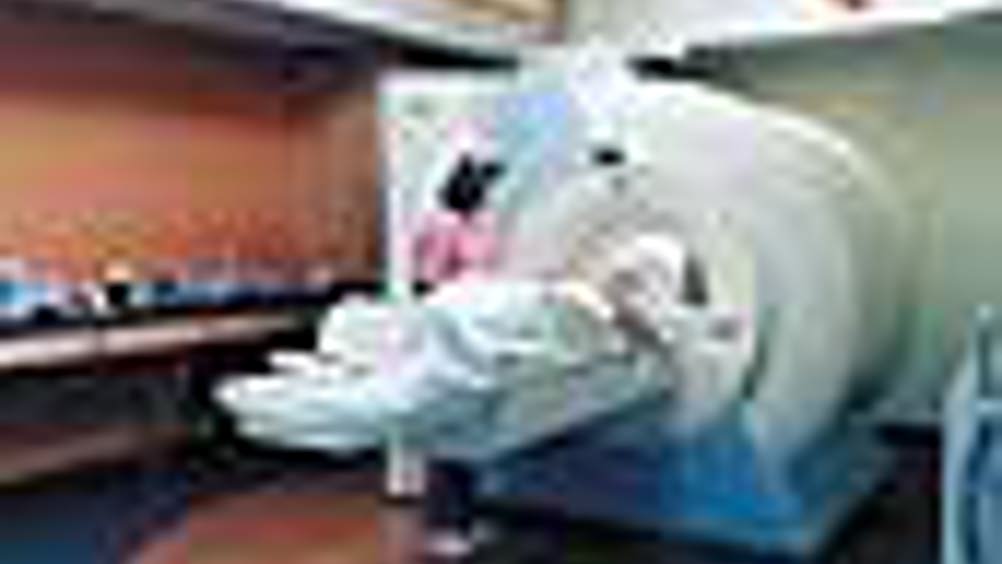Clean sweep for MRI
A faster magnetic resonance imaging data-acquisition technique will cut the time many patients spend in a cramped MR scanner, yet deliver more precise 3D images of their bodies.

A faster magnetic resonance imaging (MRI) data-acquisition technique will cut the time many patients spend in a cramped MR scanner, yet deliver more precise 3D images of their bodies.
Developed at the University of Wisconsin-Madison, the faster technique will enable clinics to image more patients—particularly the burgeoning group of older adults with osteoarthritis-related knee problems—and can help researchers more rapidly assess new treatments for such conditions.
MR has long been touted as the ideal method for capturing 3D images of the human body. “But unfortunately, it’s kind of a slow technique,” said Walter Block, an associate professor of biomedical engineering and medical physics. “You can only sample a few pieces of information needed to build the image at a time.”
Consequently, most MR technicians acquire images as a series of 2D slices, which yield high resolution in a single plane and poor resolution in the remaining direction, he said.
Register now to continue reading
Thanks for visiting The Engineer. You’ve now reached your monthly limit of news stories. Register for free to unlock unlimited access to all of our news coverage, as well as premium content including opinion, in-depth features and special reports.
Benefits of registering
-
In-depth insights and coverage of key emerging trends
-
Unrestricted access to special reports throughout the year
-
Daily technology news delivered straight to your inbox










UK Enters ‘Golden Age of Nuclear’
Apologies if this is a duplicate post - a glitch appears to have removed the first one: > While I welcome the announcement of this project, I note...